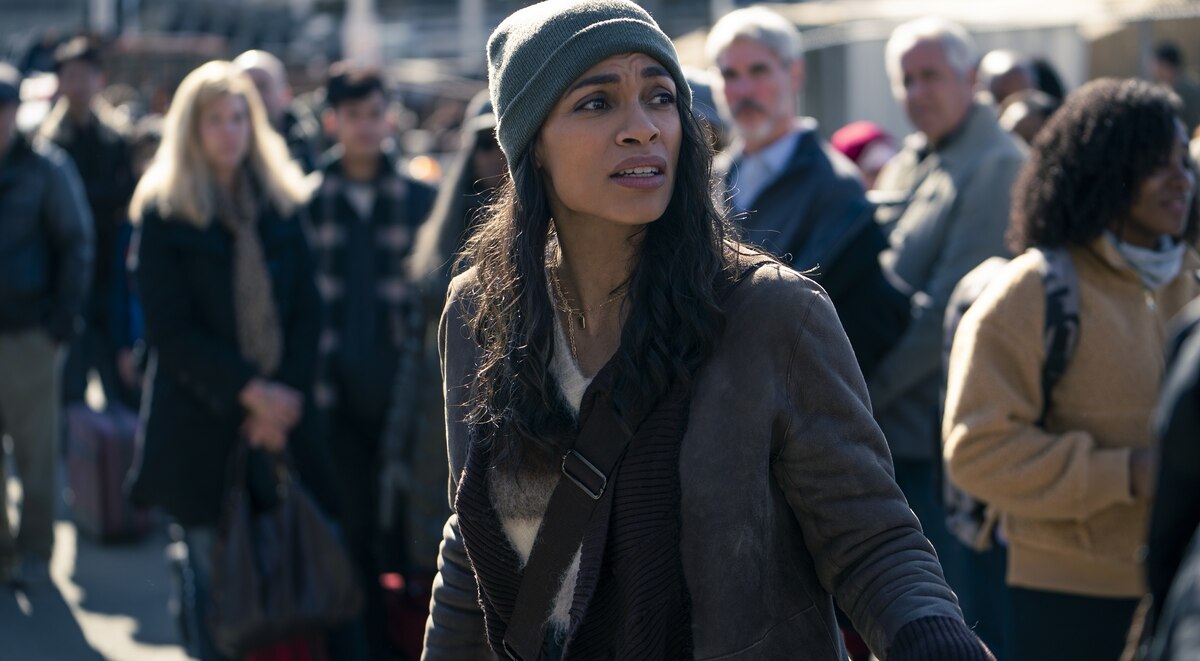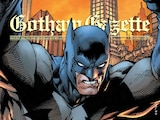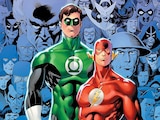A civil war has erupted in America and Manhattan has fallen. What was once a thriving metropolis has become a demilitarized zone, where different factions fight for power, and everyone else struggles to survive. Welcome to the world of DMZ. The critically acclaimed Vertigo comic debuts today on HBO Max as an exciting limited series executive produced by Ava DuVernay and starring Rosario Dawson and Benjamin Bratt. All four episodes have been released, and if you enjoy them, there’s an even larger story to discover in the comic (which, not so coincidentally, is now available in full on DC UNIVERSE INFINITE). But before you dive in, we caught up with showrunner Robert Patino, who told us how he built the series from the acclaimed source material, what it was like to build a post-apocalyptic Manhattan, and the challenges of filming during the pandemic.
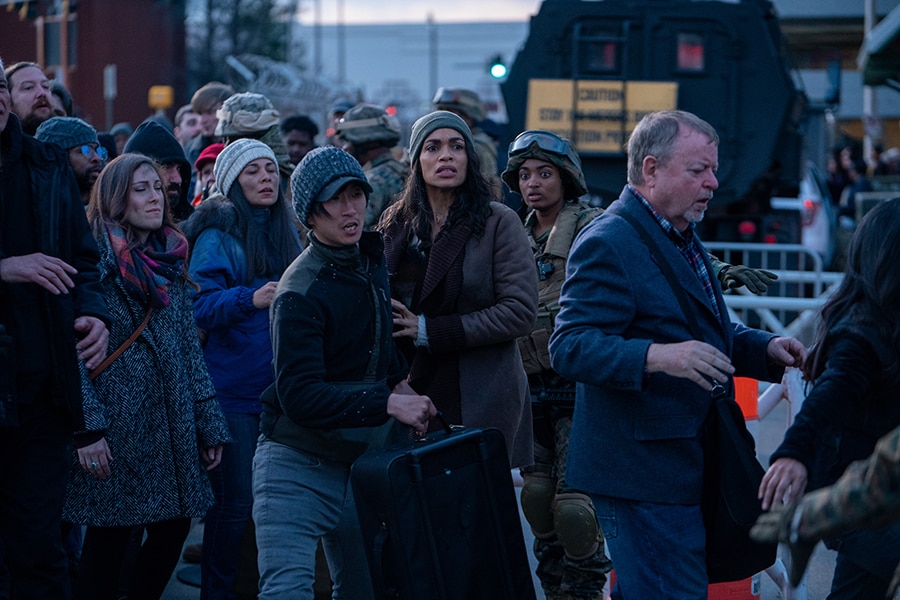
What drew you to the world of DMZ?
DMZ came out almost 17 years ago...2005. I remember I got it at Newbury Comics in Boston, and I was hooked. It was a terrifying idea. It just kept me plugged in.
The whole angle of the comic, following Matty Roth, this photojournalist in this Manhattan that’s been turned inside out was perfect for the comic because you just want to explore that land, and I did—I devoured every issue. And then five years ago, I came back to it, and the thing took on a whole new meaning. The comic was written in a post-9/11 world, and suddenly here the concept of our military occupying somewhere else wasn't resonating. What was resonating was something that was much closer to home. It existed in my orbit for a couple years before I was like, “This might be a really evocative premise to bring to television.”
I know there had been a couple attempts before, but I really needed to update it. I firmly believe that the comic as written is unadaptable faithfully today. So, I really kind of liberated myself from those restraints and took the spirit of the world, and the spirit of the action of the world, and built a story around Zee, who was my favorite character in the comic. I took creative license with her and rebuilt her from the ground up and made her the center of gravity for this tale retold.
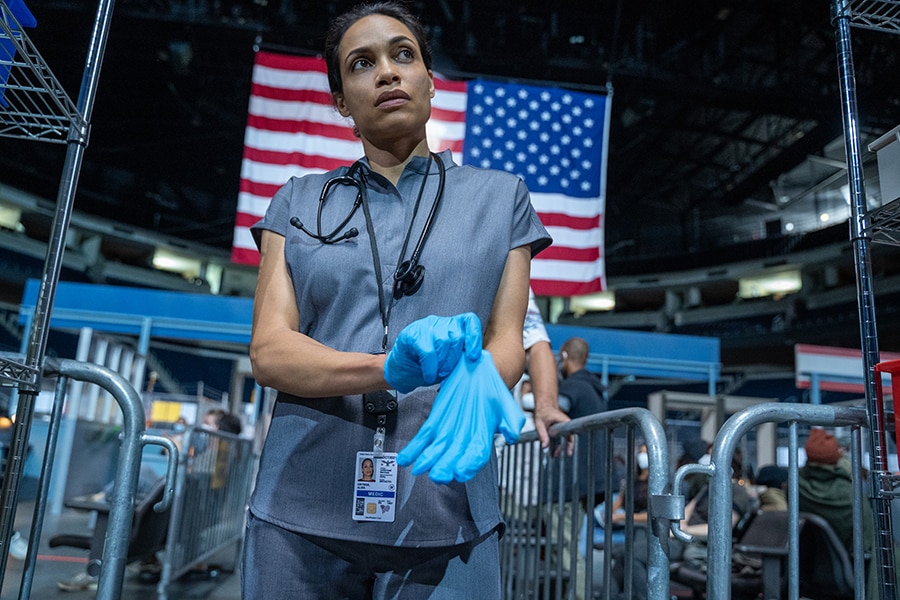
Alma Ortega is the protagonist guiding us through this world. You touched on how you based her off of Zee. I’d love to hear more about her creation and development.
The spirit of Zee remains. She was a healthcare worker before the war, evacuation day hit, and where it diverges is in the comics, she planted a flag and stayed. In the show, she is seeking to get out along with every single person in Manhattan, and she gets separated from her son on evacuation day.
The backdrop of the story in the show is that she has been working as a field medic all over the Free States of America, and all over the United States of America. She's been saving lives, tending to wounds, and hasn't been able to really look for her son. She doesn't know if he got out or not, and the one place she hasn't looked for him is the DMZ. She's found a way in with this underground railroad/coyote sort of person. They sneak her in, and she gets 24 hours in the DMZ to look for her son.
The DMZ, formerly Manhattan, must have been fun to design. Can you talk about that experience?
It was really fun. It was also terrifying. It's one thing to talk about Central Park as an overgrown Adirondack forest, it's another thing to actually realize it. That was a lot of fun. We scouted Manhattan and we actually found that the production restraints there worked against us. We didn't actually need Manhattan—we needed space to recreate our version, the DMZified version of Manhattan. And for that, we turned to Atlanta, where we had a space and we had the latitude to go literally shoot in a forest and build an emptied out Bethesda Fountain. It seems antithetical, but it was only possible not in Manhattan. We had an amazing team, and a really inclusive and passionate crew, and I'm very proud of what we've pulled off.
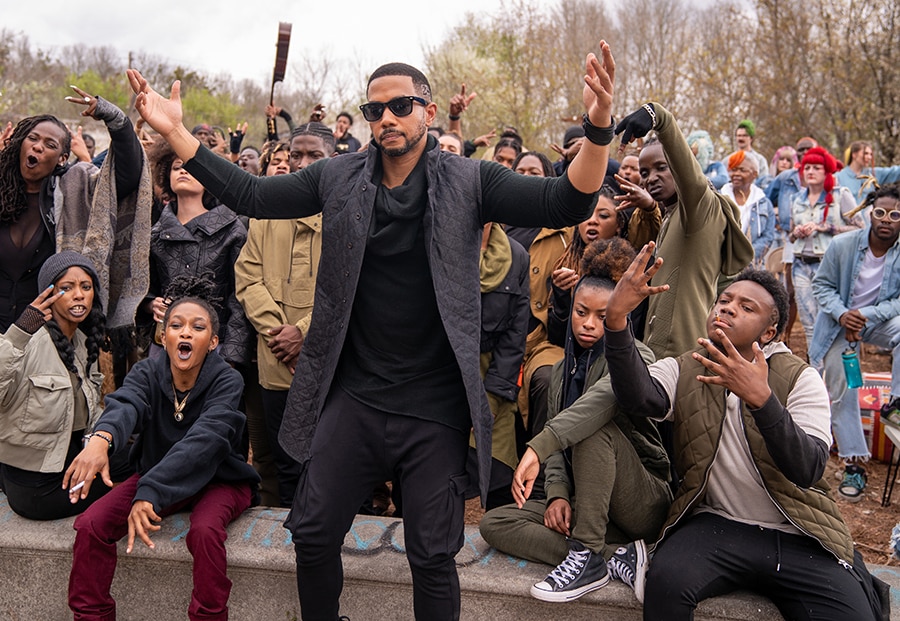
The fabulous Ava DuVernay directed the pilot episode, and Ernest Dickerson took the chair on the rest. Can you describe your working relationship with them?
Ava is an icon, she's a boss. The backbone of the story on an ideological level that I wanted to tell was about inclusivity. Taking actors and people of color and elevating them. I really wanted to run in the opposite direction of what a dystopic post-apocalyptic world might look like, and tell the story of what happens next, which is people coming together.
Warner Bros. TV set me up with Ava. We were a studio blind date, and I pitched her that ethos and we immediately connected. We started digging into the material, and she found it incredibly provocative like I did. We can present a circumstance that is laced with what you would call “the protein in the Snickers bar.” It's an action-packed, thrilling story, but there are some provocative important ideas baked in. She's been an incredible partner. We have a very ego-free and open transparent creative partnership, which is so liberating. She is not scared of anything. She'll offer up ideas that sometimes might not be tethered to anything in the show, but they are so damn good. You can't help but recalibrate towards them. And then she'll offer up similar ideas that are completely impractical, but that tee off another idea that is perfect. She's been great.
And then Ernest Dickerson—he's the man who taught me what a cinematographer is. When I watched Do The Right Thing, I remember being struck by the way the camera moves, and it was the first time I was like, “Oh my god, this is what the power of filmmaking is.” I watched the credits intentionally, and I saw his name and I looked up what cinematographer means. I think I was ten years old at the time. That has etched Ernest Dickerson in my mind indelibly. To be able to come full circle now, 25 years later, and call him my creative partner has been amazing. He was just such a joy to show up to set with. A keen guy, real sharp and a visionary. He shot some of the episodes of The Wire, my favorite show of all time. He knew Atlanta very well from his time on The Walking Dead. It was a joy. I got very lucky with my partners.

After filming the pilot in early 2020, the second episode didn’t enter production until 2021. Was it hard to pick back up where you left off?
It was and it wasn't. We finished the pilot literally the day we were mandated to go home. We managed to complete it, and then we shut ourselves inside for fifteen months, which was very, very trying. The entire post-production on the show has been remote. It did give us a sense of time as to how the story needed to build. It really gave me and Ava a moment to step back and reassess how this show could be, and that's where I landed on the limited series and just being able to tell a four-hour movie, where every single beat matters and where every single scene barrels forward. That was a blessing.
And then the other side of that is it wasn't hard at all to pick up. We were blessed with Rosario Dawson as our lead and Benjamin Bratt as our number two on the call sheet. And those two alone really injected the entire project with a sense of intentionality and passion. They're just so fun to work with. They're so fun to be with on set. They really keyed into the script and really keyed into their characters. They found all the nooks and crannies. We really formed a wonderful friendly family.
DMZ is now streaming on HBO Max. Not yet a subscriber? Sign up today to enjoy the best of DC movies and TV.
Have you seen DMZ yet? What did you think of it? Discuss DC's newest HBO Max series right now over in the DC Community!
